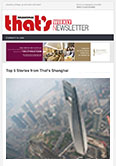On July 11, 2025, China welcomed its 60th entry to the World Heritage list—the Xixia Imperial Tombs, a sprawling 40-square-kilometer necropolis nestled at the foot of the Helan Mountains in Ningxia.
Fourteen years of conservation work in the making, this newly crowned site tells a remarkable story of forgotten kingdoms, multicultural fusion, and archaeological resilience.
A Forgotten Kingdom Rediscovered
Long before Beijing or Hangzhou rose to global fame, a mysterious dynasty thrived along the Silk Road.
The Xixia Dynasty, or Western Xia, founded by the Tangut people in 1038, stood as a cultural crossroads between the Han Chinese, Tibetan, Uyghur, and Khitan civilizations.
For nearly 200 years, the Xixia ruled parts of today’s Ningxia and Gansu—only to vanish into the shadows of history after falling to Genghis Khan’s Mongol armies in 1227.
That is, until 1972, when archaeologists began unearthing an ancient royal burial complex northwest of Yinchuan.
Towering pyramidal tombs, bilingual inscriptions, and hybrid motifs revealed a lost civilization that blended Buddhist spirituality, nomadic traditions, and imperial power.
A 50-Year Preservation Journey
The path to UNESCO recognition was long, but diligent:
1972–1988: First large-scale excavations laid the groundwork for heritage designation.
2013: A formal bid for World Heritage status kicked off.
2024: China submitted the Xixia tombs as its nominee for that year, earning praise for its cutting-edge conservation work developed alongside the Dunhuang Academy.
July 2025: UNESCO gave its stamp of approval, hailing the site as "an exceptional example of cultural exchange in ancient Eurasia."
What Makes the Xixia Tombs Special?
The site features nine imperial mausoleums, 271 satellite tombs, and an ancient flood-control system that speaks volumes about Tangut innovation.
Three things particularly impressed UNESCO:
Fusion Architecture at Its Finest
The tombs combine Tang-Song dynasty symmetry with off-center earth pagodas, ditching traditional que gates—a freestanding, ceremonial gate tower—for elegant stele pavilions.
It’s a rare visual blend of Han, Tibetan, and nomadic influences—all designed to align with the sacred geography of the Helan Mountains.
A Silk Road Superhub
Central Asian beads, Song-era silk fragments, and bronze coins tell of a region that thrived on east-west trade.
As Chinese historian Du Jianlu puts it: "As a multi-ethnic regime, Western Xia culture was diverse and eclectic, yet it was predominantly shaped by the Chinese civilization."
Cultural Hybridity in Every Detail
From bilingual steles in Tangut and Chinese to massive glazed chīwěn roof creatures (dragon-fish guardians), the site showcases a civilization unafraid to experiment and absorb everything from Buddhism to Han rituals.
Artifacts That Speak Volumes
 Image via Department of Culture & Tourism of Ningxia Hui Autonomous Region/WeChat
Image via Department of Culture & Tourism of Ningxia Hui Autonomous Region/WeChat
While the tombs themselves are a sight to behold, a few standout relics bring Xixia culture into sharp focus.
Glazed Roof Guardians
These large green chīwěn statues protected tomb roofs while reflecting Tangut flair for bold color and form. They combine Han architectural tradition with an artistic imagination that feels refreshingly modern.
Gilt Bronze Bull (1977 Find)
Weighing in at 188 kg, this lifelike sculpture was created using the ancient lost-wax technique. It symbolizes the Tangut shift from nomadic herding to settled agriculture.
Stone Atlas with Warrior Inscription
A rare bilingual carving signed by Gao Shichang, a Han artisan. His scowling warrior figure stands atop a base engraved with Tangut script—a silent witness to cross-ethnic collaboration.
Exhibitions Across China
Even if you can’t make it to Ningxia right away, Xixia culture is on tour.
Shanghai
Now–Sep 14, 2025
 Image via Shanghai History Museum/WeChat
Image via Shanghai History Museum/WeChat
Treasures of Cultural Relics from the Xixia Imperial Tombs at the Shanghai History Museum features 120+ artifacts, including the iconic Stone Atlas.
Don’t miss the VR exploration pods that let you “walk” inside the tombs.
Hands-On Activities:
July 15 – 'Xixia Codebreakers' VR quests for teens
July 19 – Tangut script calligraphy workshop
Beijing
Coming This September
A second leg of the touring exhibition is expected to hit Beijing—stay tuned for more details.
Ancient Cultural Melting Pot
The Xixia tombs are a reminder that China’s cultural DNA has always been mixed. Han engineers, Tangut rulers, Tibetan monks, and Silk Road merchants collaborated to define their own version of pluralism.
As Sun Bojun of the Chinese Academy of Social Sciences puts it:
"When the world sees Xixia’s earth pagodas and bilingual steles, it witnesses not a fallen empire, but how cultures converge into one civilization—plural yet unified."
The Xixia site offers more than history—it’s an invitation to explore how diversity has long been at the heart of Chinese identity.
So whether you’re museum-hopping in Shanghai or planning your next long weekend to western China, the Xixia tombs are worth being on your radar.
[Cover image via Department of Culture & Tourism of Ningxia Hui Autonomous Region/WeChat]


















0 User Comments